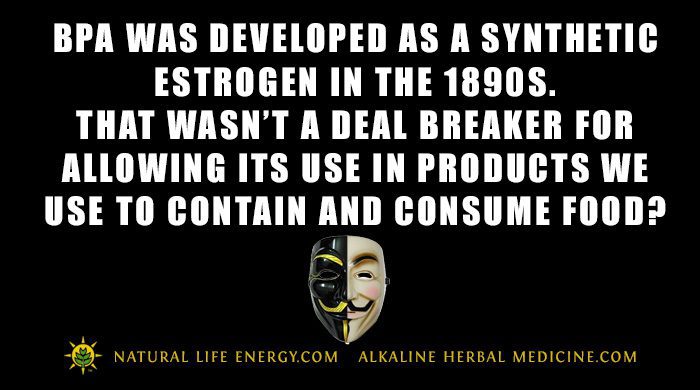BPA Was First Developed As A Synthetic Estrogen During The 1890s

BPA Was First Developed As A Synthetic Estrogen
Bisphenol A (BPA) was developed in the 1890s as a synthetic estrogen.[1] What genius thought is was okay to use it in plastic items used to contain and consume food?
Research has raised concerns about its connection to diabetes, cardiovascular, respiratory, and kidney diseases, breast cancer, birth defects, reproductive disorders, and obesity.[2]
Industry realized in the 1950s[3] it could use BPA to make polycarbonate plastic and it appears the original reason the chemical was made was overlooked.
Learn more about alkaline foods on the Dr. Sebi Nutritional Guide »
Government regulating bodies had determined that 50 milligrams per kilogram of BPA exposure was a tolerable intake of BPA daily.[1]
Studies have shown that exposure way below the tolerable intake level still negatively effected the sperm count of men.[4]
Dr. Greger on Youtube
[1] Rochester, JR. Bisphenol A and human health: a review of the literature. Reprod Toxicol. 2013 Dec;42:132-55.
[2] Rezg R, El-Fazaa S, Gharbi N, Mornagui B. Bisphenol A and human chronic diseases: current evidences, possible mechanisms, and future perspectives. Environ Int. 2014 Mar;64:83-90.
[3] Eladak S, Grisin T, Moison D, Guerquin MJ, N’Tumba-Byn T, Pozzi-Gaudin S, Benachi A, Livera G, Rouiller-Fabre V, Habert R. A new chapter in the bisphenol A story: bisphenol S and bisphenol F are not safe alternatives to this compound. Fertil Steril. 2015 Jan;103(1):11-21.
[4] Li DK, Zhou Z, Miao M, He Y, Wang J, Ferber J, Herrinton LJ, Gao E, Yuan W. Urine bisphenol-A (BPA) level in relation to semen quality. Fertil Steril. 2011 Feb;95(2):625-30.e1-4.






